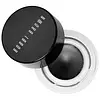What's inside
What's inside
 Key Ingredients
Key Ingredients

 Benefits
Benefits

No benefits
 Concerns
Concerns

 Ingredients Side-by-side
Ingredients Side-by-side

Isododecane
EmollientCyclopentasiloxane
EmollientPolyethylene
AbrasiveTrimethylsiloxysilicate
EmollientDisteardimonium Hectorite
StabilisingPropylene Carbonate
SolventLecithin
EmollientPhenyl Trimethicone
Skin ConditioningHydrogenated Polyisobutene
EmollientMethicone
EmollientCI 77120
Cosmetic ColorantBHT
AntioxidantPhenoxyethanol
PreservativeIron Oxides
Mica
Cosmetic ColorantCI 77891
Cosmetic ColorantCI 42090
Cosmetic ColorantCI 75470
Cosmetic ColorantCI 77288
Cosmetic ColorantCI 77742
Cosmetic ColorantCI 19140
Cosmetic ColorantCI 77289
Cosmetic ColorantCI 77163
Cosmetic ColorantCI 77007
Cosmetic ColorantCI 77510
Cosmetic ColorantIsododecane, Cyclopentasiloxane, Polyethylene, Trimethylsiloxysilicate, Disteardimonium Hectorite, Propylene Carbonate, Lecithin, Phenyl Trimethicone, Hydrogenated Polyisobutene, Methicone, CI 77120, BHT, Phenoxyethanol, Iron Oxides, Mica, CI 77891, CI 42090, CI 75470, CI 77288, CI 77742, CI 19140, CI 77289, CI 77163, CI 77007, CI 77510
Cyclopentasiloxane
EmollientPolypropylsilsesquioxane
Ceresin
Emulsion StabilisingIsododecane
EmollientCyclohexasiloxane
EmollientCaprylyl Methicone
Skin ConditioningSynthetic Fluorphlogopite
Silica Silylate
EmollientDisteardimonium Hectorite
StabilisingDisodium Stearoyl Glutamate
CleansingPropylene Carbonate
SolventCandelilla Cera
EmollientCaprylyl Glycol
EmollientAluminum Hydroxide
EmollientCalcium Sodium Borosilicate
Calcium Aluminum Borosilicate
Silica
AbrasiveTin Oxide
AbrasiveCI 77491
Cosmetic ColorantCI 77492
Cosmetic ColorantCI 77499
Cosmetic ColorantMica
Cosmetic ColorantCI 77891
Cosmetic ColorantCI 77007
Cosmetic ColorantCI 77510
Cosmetic ColorantCI 77288
Cosmetic ColorantCI 77289
Cosmetic ColorantCI 77742
Cosmetic ColorantCI 42090
Cosmetic ColorantCI 19140
Cosmetic ColorantCyclopentasiloxane, Polypropylsilsesquioxane, Ceresin, Isododecane, Cyclohexasiloxane, Caprylyl Methicone, Synthetic Fluorphlogopite, Silica Silylate, Disteardimonium Hectorite, Disodium Stearoyl Glutamate, Propylene Carbonate, Candelilla Cera, Caprylyl Glycol, Aluminum Hydroxide, Calcium Sodium Borosilicate, Calcium Aluminum Borosilicate, Silica, Tin Oxide, CI 77491, CI 77492, CI 77499, Mica, CI 77891, CI 77007, CI 77510, CI 77288, CI 77289, CI 77742, CI 42090, CI 19140
Ingredients Explained
These ingredients are found in both products.
Ingredients higher up in an ingredient list are typically present in a larger amount.
CI 19140 is also known as Tartrazine. Tartrazine is a synthetic dye used in cosmetics, foods, and medicine to add a yellow color.
Tartrazine is created from petroleum and is water-soluble.
Some people may experience allergies from this dye, especially asthmatics and those with an aspirin intolerance.
Learn more about CI 19140Ci 42090 is a synthetic dye created from petroleum. It is used to give a bright blue color to cosmetics, medicine, and food.
This pigment is called Ultramarine blue lazurite. It gives a saturated blue color, but can be used to create other colors as well.
According to the manufacturer, it is usually made from kaolin, sodium sulfate, sodium carbonate, sulfur, and charcoal.
Ci 77288 is used to add green pigment to products.
We don't have a description for CI 77289 yet.
This ingredient is used to impart a blue color. It is not water-soluble.
It goes by two different names:
1. Ferric Ferrocyanide: a synthetic dark blue pigment
2. Ferric Ammonium Ferrocyanide: a synthetic blue pigment, also called Prussian blue
In the EU, both of these colors must be labeled as 'CI 77510'.
Learn more about CI 77510This ingredient is used to add a violet color to cosmetics.
It is created by reacting phosphoric acid, ammonium dihydrogen orthophosphate, and manganese dioxide.
Ci 77891 is a white pigment from Titanium dioxide. It is naturally found in minerals such as rutile and ilmenite.
It's main function is to add a white color to cosmetics. It can also be mixed with other colors to create different shades.
Ci 77891 is commonly found in sunscreens due to its ability to block UV rays.
Learn more about CI 77891Cyclopentasiloxane, or D5, is a silicone used to improve texture of products and trap moisture.
D5 is considered lightweight and volatile. Volatile means it evaporates quickly after application. Once evaporated, D5 leaves a thin barrier that helps keep skin hydrated.
It is also an emollient. Emollients help soften the skin and prevent water loss. Silicones create a silky texture in products. D5 helps other ingredients become more spreadable.
Studies show D5 is safe to use in skincare products. We recommend speaking with a skincare professional if you have concerns.
Learn more about CyclopentasiloxaneDisteardimonium Hectorite comes from the clay mineral named hectorite. It is used to add thickness to a product.
It can also help stabilize a product by helping to disperse other ingredients.
Hectorite is a rare, white clay mineral.
Learn more about Disteardimonium HectoriteIsododecane is a fragrance, emollient, and solvent.
As an emollient, it helps your skin stay soft and hydrated. Emollients help trap moisture into your skin.
Isododecane's role as a solvent makes it a great texture enhancer. It spreads smoothly on skin and does not leave a sticky feeling behind. Isododecane also helps prevent color transfer in makeup products.
Isododecane is not absorbed into skin.
Learn more about IsododecaneMica is a naturally occurring mineral used to add shimmer and color in cosmetics. It can also help improve the texture of a product or give it an opaque, white/silver color.
Serecite is the name for very fine but ragged grains of mica.
This ingredient is often coated with metal oxides like titanium dioxide. Trace amounts of heavy metals may be found in mica, but these metals are not harmful in our personal products.
Mica has been used since prehistoric times throughout the world. Ancient Egyptian, Indian, Greek, Roman, Aztec, and Chinese civilizations have used mica.
Learn more about MicaThis ingredient is a solvent. It helps dissolve active ingredients and alter the texture of products.
Propylene Carbonate is commonly used in makeup and with clay, such as montmorillonite or bentonite.
Studies show this ingredient to be safe for cosmetics. When it is undiluted, it can cause skin irritation. (It is always diluted in skincare and makeup). This ingredient is water-soluble.
Propylene Carbonate is created from propylene glycol and carbonic acid.
Learn more about Propylene Carbonate